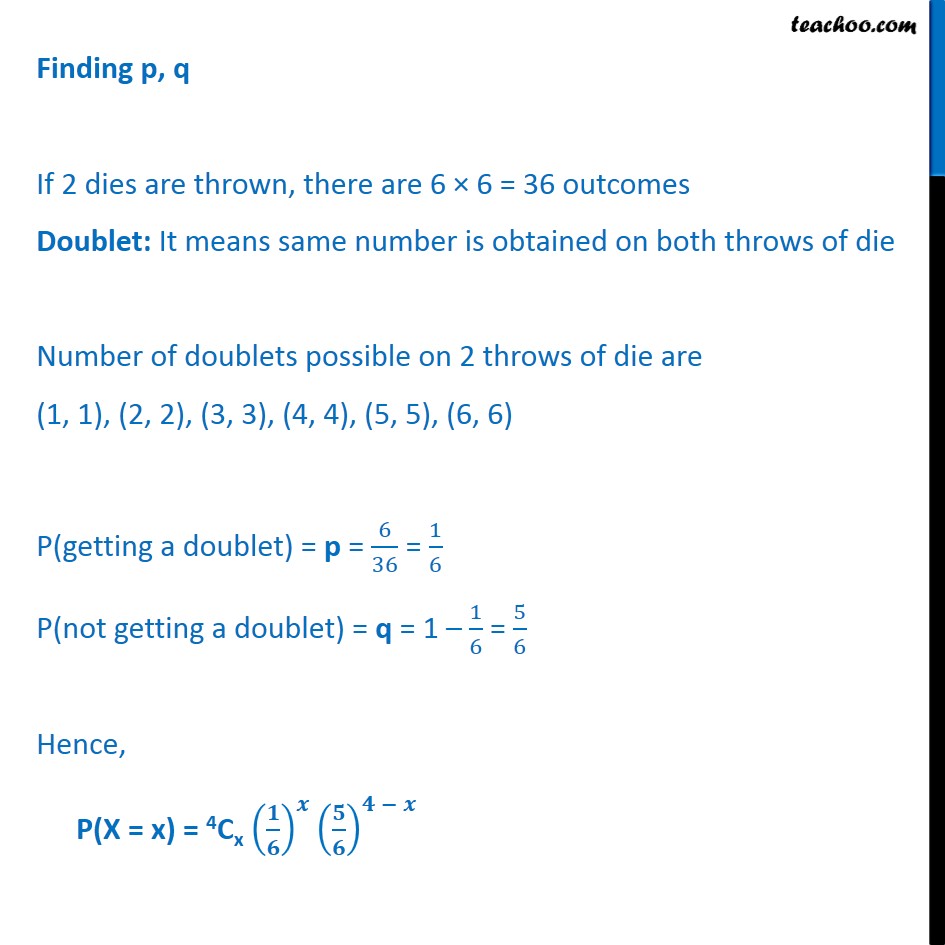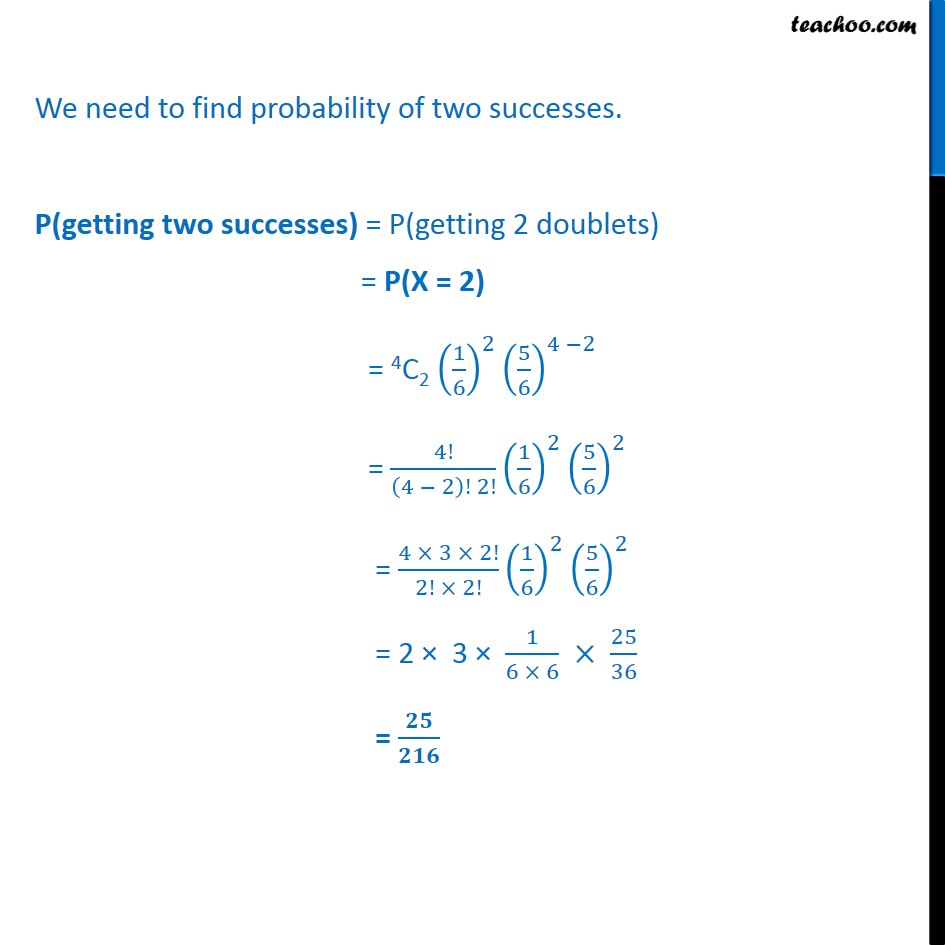


Last updated at Dec. 16, 2024 by Teachoo



Transcript
Question 2 A pair of dice is thrown 4 times. If getting a doublet is considered a success, find the probability of two successes. Let X : be the number of doublets Throwing a pair of die is a Bernoulli trial So, X has binomial distribution P(X = x) = nCx 𝒒𝒏−𝒙 𝒑𝒙 Where n = number of times die is thrown = 4 Finding p, q If 2 dies are thrown, there are 6 × 6 = 36 outcomes Doublet: It means same number is obtained on both throws of die Number of doublets possible on 2 throws of die are (1, 1), (2, 2), (3, 3), (4, 4), (5, 5), (6, 6) P(getting a doublet) = p = 636 = 16 P(not getting a doublet) = q = 1 – 16 = 56 Hence, P(X = x) = 4Cx 𝟏𝟔𝒙 𝟓𝟔𝟒 − 𝒙 We need to find probability of two successes. P(getting two successes) = P(getting 2 doublets) = P(X = 2) = 4C2 162 564 −2 = 4! 4 − 2! 2! 162 562 = 4 × 3 × 2!2! × 2! 162 562 = 2 × 3 × 16 × 6 × 2536 = 𝟐𝟓𝟐𝟏𝟔